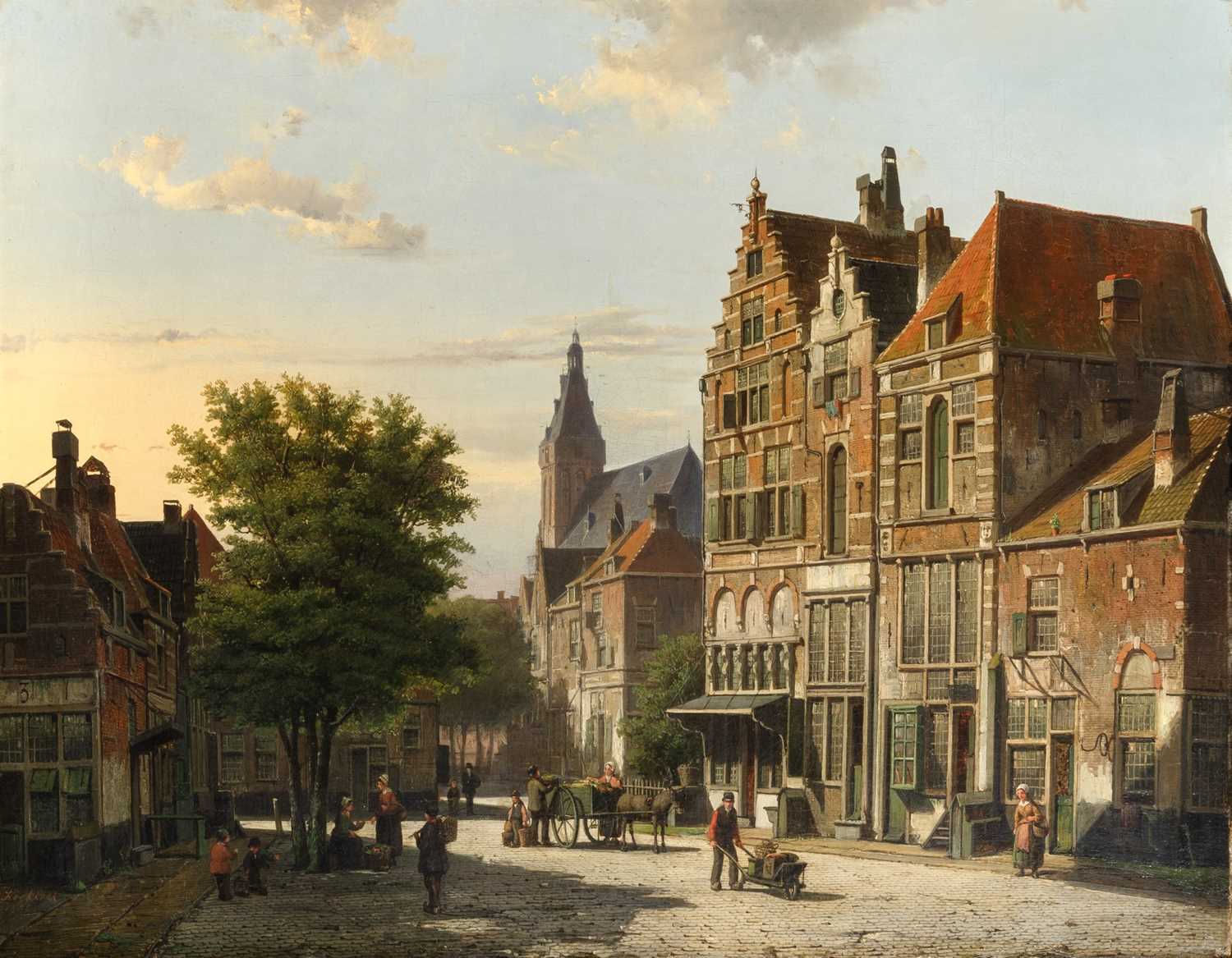
Willem Koekkoek
Dutch, 1839-1895
Willem Koekkoek was a Dutch painter best known for his richly detailed cityscapes and architectural views. A prominent member of the renowned Koekkoek family of artists, he was born in Amsterdam, the son of marine painter Hermanus Koekkoek. Though he initially studied architecture, Willem ultimately followed the family calling to painting, training under his father and developing a precise, painterly approach.
Koekkoek made his exhibition debut in Leeuwarden in 1859 and became a regular presence in major Dutch art circles, showing works in Amsterdam, The Hague, and Rotterdam from the 1860s onward. His finely rendered depictions of 17th and 18th-century Dutch towns, often imagined but historically inspired, are populated with genre scenes of daily life. Market squares, gabled rooftops, and cobbled streets are rendered with architectural accuracy. His works found a receptive audience both in the Netherlands and abroad, particularly in England, where they were exhibited and collected widely.
In 1866, Koekkoek married Johanna Hermina, and together they had two sons, Hermanus Willem and Marinus Adrianus, both of whom became painters under his guidance. He worked in several Dutch cities throughout his life, including Amsterdam, The Hague, Utrecht, and Amstelveen. Even as illness curtailed his later output, Koekkoek remained committed to his art, leaving behind a body of work that continues to captivate collectors and institutions.



